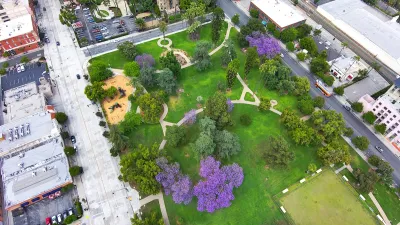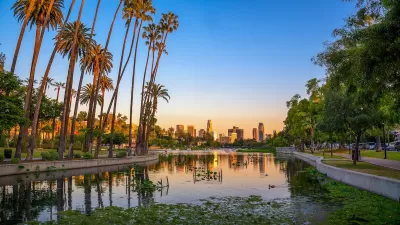The Los Angeles County Board of Supervisors just approved the development of a new pocket park in Walnut Park, one of the most park-poor communities in the county.

According to the 2016 Los Angeles Countywide Parks Needs Assessment, Walnut Park is a study area with a very high level of park need. To improve park access and address the needs of community residents, the County of Los Angeles will be developing a new half acre pocket park in the center of Walnut Park. As Steven Sharp reports in this article, the park will have a staff office and public restroom building, playground areas, splash pad, an open lawn area, and additional park amenities.
In addition, the park will have stormwater capture elements, including a diversion system and infiltration dry wells to divert and capture both urban and stormwater runoff. These elements will reduce bacteria and metal pollutants from entering the Los Angeles River through the capture of stormwater and urban runoff from a 27-acre drainage area.
The new pocket park is one of several projects featured in Advancing Park Equity in Los Angeles County, which discusses how the Los Angeles County Department of Parks and Recreation is addressing the needs of very high and high park need communities.
FULL STORY: Walnut Park will get some new green space

Trump Administration Could Effectively End Housing Voucher Program
Federal officials are eyeing major cuts to the Section 8 program that helps millions of low-income households pay rent.

Planetizen Federal Action Tracker
A weekly monitor of how Trump’s orders and actions are impacting planners and planning in America.

Ken Jennings Launches Transit Web Series
The Jeopardy champ wants you to ride public transit.

California Invests Additional $5M in Electric School Buses
The state wants to electrify all of its school bus fleets by 2035.

Austin Launches $2M Homelessness Prevention Fund
A new grant program from the city’s Homeless Strategy Office will fund rental assistance and supportive services.

Alabama School Forestry Initiative Brings Trees to Schoolyards
Trees can improve physical and mental health for students and commnity members.
Urban Design for Planners 1: Software Tools
This six-course series explores essential urban design concepts using open source software and equips planners with the tools they need to participate fully in the urban design process.
Planning for Universal Design
Learn the tools for implementing Universal Design in planning regulations.
Ada County Highway District
Clanton & Associates, Inc.
Jessamine County Fiscal Court
Institute for Housing and Urban Development Studies (IHS)
City of Grandview
Harvard GSD Executive Education
Toledo-Lucas County Plan Commissions
Salt Lake City
NYU Wagner Graduate School of Public Service





























